库比文化与运动中心,菲特烈堡,丹麦
2016-12-06建筑设计MVRDV建筑事务所ADEPT事务所
建筑设计:MVRDV建筑事务所+ADEPT事务所
库比文化与运动中心,菲特烈堡,丹麦
建筑设计:MVRDV建筑事务所+ADEPT事务所
3200m2的库比文化与运动中心是为菲特烈堡郡设计的,将成为周边社区以及更广阔的大哥本哈根地区的活动聚点。这是一栋让每个人主动参与、可根据使用者的特定需求而不断改变功能的建筑。这座建筑是一种全新的类型,它完全出于对这样一个设计要求的回应,即创造一座能将人们聚集起来、提高生活质量的建筑。MVRDV建筑事务所和ADEPT事务所共同设计的这座建筑,将剧场、运动和学习功能融入一个空间,在这里不论年龄、能力或兴趣,每个人都可以尽情活动身体和大脑,追求更加健康的生活,让原先可能不会有接触的人群产生关联。
库比文化与运动中心由6个主要体量组成,每个体量包括一个特定的功能,表面采用各不相同的颜色和材质,从而在建筑中产生明确的标识性;这些体量的暗示也透过碎片化的瓷砖立面展现在外部。“我们设计的库比中心致力于激发出乎意料之物”,MVRDV的创始合伙人雅各布·凡·里斯解释道,“较大的体量适合举办演出或公共会议,较小的体量则可用于展览或讨论。高速的空间为舞蹈、跑酷量身定制,而禅室则是瑜伽或冥想的理想场所。”不过,最有趣的事情可能会发生在这些体量之间,这些空间中我们会给出一些使用的暗示,但真正的功能完全由用户自己来决定。
建筑中流线设计的重点是挖掘和鼓励不同形式的运动。一个位于二层和三层之间的“迷宫”,要求人们手脚并用地爬过一个三维编制的网道;作为替代路径他们也可以选择“捕鼠器”。一个垂直的迷宫,一张编制在建筑各楼层之间的网,让使用者可以在楼层之间攀爬——乃至悬挂在空中——也可通过滑梯或消防员滑竿快速地回到地面。“在库比中心,我们试图将平庸的建筑体验转移到它的‘大脑’,”ADEPT事务所的创始合伙人马丁·克洛格说,“其他建筑中简单、不用动脑的行程,在这座建筑中演变为一场探索和发现之旅。在此,由你自己来定义路线:无论是攀爬、滑行、爬行……还是跑跳。”为了满足所有年龄段及运动能力者的需求,我们同时提供了更简易的或是更标准化的行进方式。不过即便如此,整座建筑中依然保持了视线上的延续性。
一片城市花园位于库比中心和城市边界之间,也极大地展现了建筑内8个体量及其内部的活动。这个多样化的景观,是由不断变化的声、光、味组成的微气候系统,完美地融合为一个有着连续坡度的起伏山坡。它延伸至花园之中,结束于一个圆形露天剧场。
作为菲特烈堡城市景观的拓展以及深度介入社区的一部分,库比文化与运动中心致力于能成为未来社区发展的孵化器。(黄华青 译)
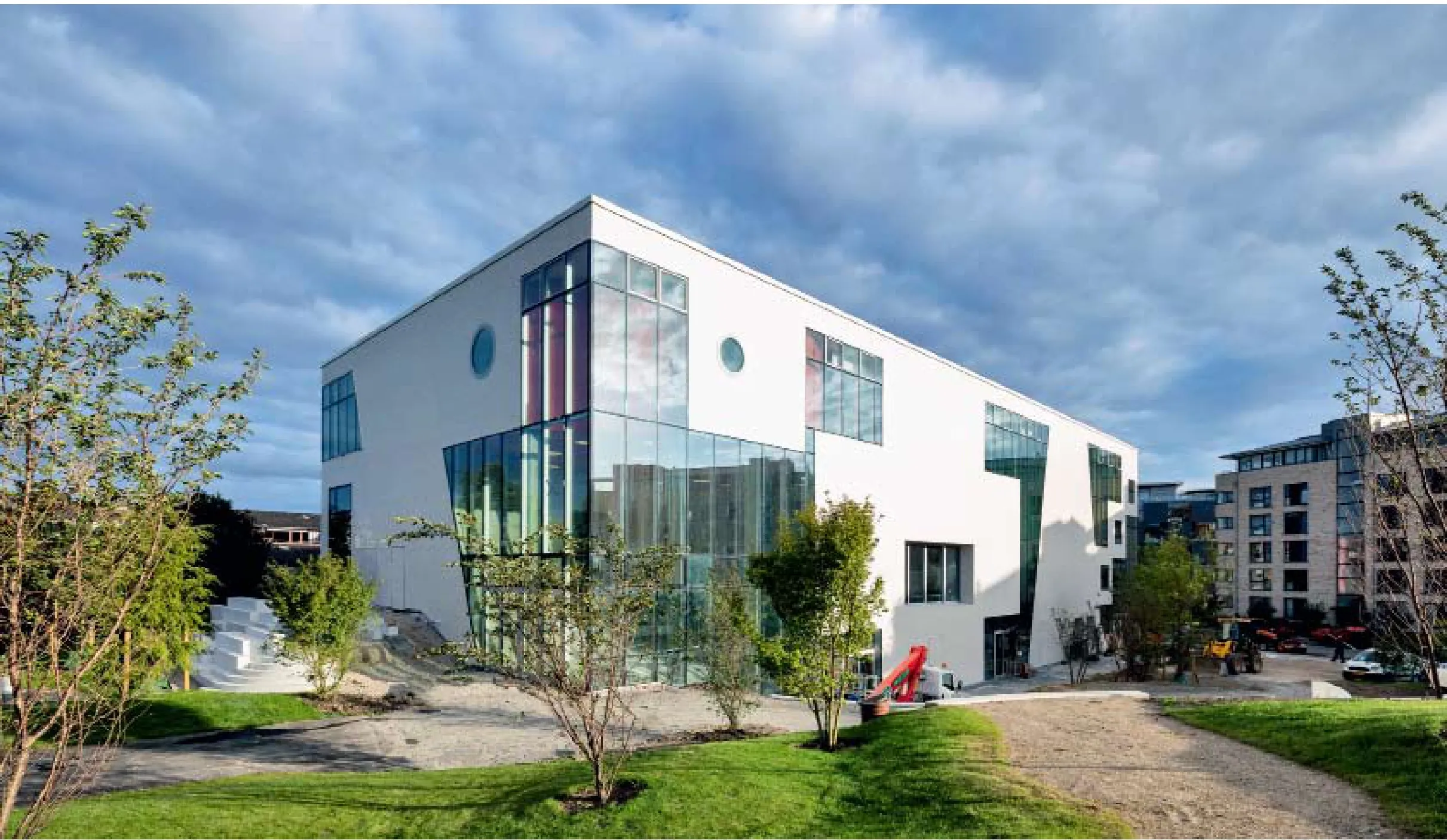
1 外景/Exterior view

2 夜景/Night view
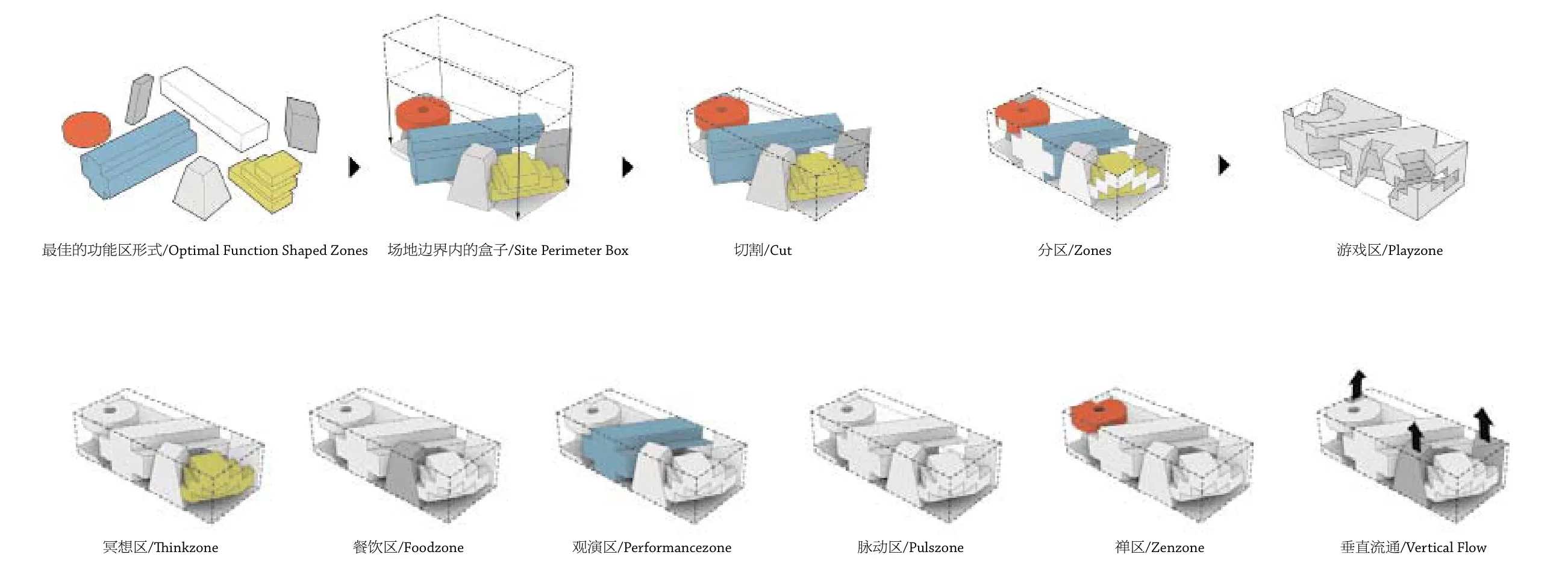
3 分析图/Diagram

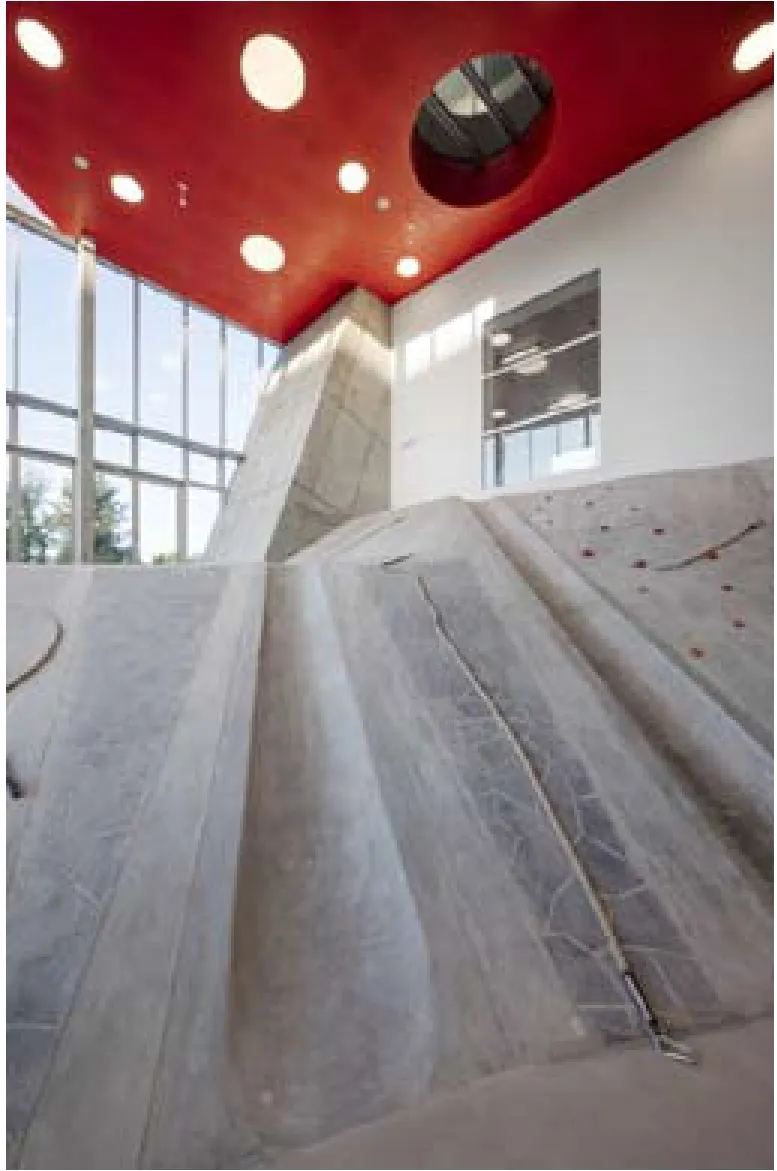
4.5 内景/Interior view
The 3200m2Ku.Be House of Culture and Movement was designed for the municipality of Frederiksberg as a focal point for both the immediate community and also the wider area of Copenhagen; one that the people themselves could take ownership of and that would evolve its program based on the specific wants and needs of its users. The project is a new typology that developed out of the response to a brief solely asking for a building to bring people together and improve the quality of life. In reply MVRDV and ADEPT answered with one that blends theatre, sport and learning into a space where body and mind are activated to promote a more healthy life for everyone, regardless of age, ability or interest; creating links between people that wouldn't otherwise connect with each other.
The six primary volumes which make up Ku.Be, each with their own program, are clad in a unique colour and material, clearly defining them within the building; from outside these shapes are hinted at in the fragmented tile façade. "We designed Ku.Be to encourage the unexpected," explains MVRDV co-founder Jacob van Rijs. "Larger volumes are suited to hold performances or public meetings, smaller ones can be for exhibitions or debates. The fast-pace rooms are perfect for dance, or parkour; and zen rooms presenting the contrast of yoga or meditation. It's between these volumes where the real fun will happen though; spaces where we hint at a use, but which will become entirely user-defined."
The route through the building focuses on developing and encouraging alternate forms of movement. The Labyrinth gets people on their hands and knees climbing through a three dimensional network of cubes from the second to third floors; or alternatively they could take the Mousetrap, a vertical maze. A net which spans several floors throughout the building, lets users climb up from floor to floor – suspended over the voids – and slides and fireman poles offer a fast way to get back down. "In Ku.Be we tried to turn your average experience of a building on its head," tells ADEPT co-founder Martin Krogh. "What would otherwise be a simple, mindless journey through the building turns into an exploration and discovery of movement. Here it's you that defines the route, no matter what you want: climbing, sliding, crawling…jumping." To cater for all cap abilities and ages, both easier and more standard ways of moving around are provided but even then a visual connection is maintained throughout Ku.Be.
The outside urban gardens form the connection between Ku.Be and the urban realm, playing an important role in expressing the eight volumes and the activities happening inside. The diverse landscape – a system of microclimates with changing sounds, lights and scents which blends seamlessly into a hill with integrated slides – reaches out into the gardens and ends in an amphitheatre outside.
By becoming an extension of the urban landscape of Frederiksberg and integrating the community to such an extent, the House of Culture and Movement looks to become an incubator for further development within the neighbourhood.
项目信息/Credits and Data
客户/Client: Municipality of Frederiksberg, Danish Foundation for Culture and Sport Facilities (LOA) and Realdania Foundation
设计团队/Design Team : Winy Maas, Jacob van Rijs and Nathalie de Vries with Fokke Moerel, Mette Rasmussen, Julius Kirchert, Klaas Hofman, Francisco Pomares, Armor Gutierrez Rivas, Buster Christensen, Attilio Ranieri, Chris Green, Kate van Heusen, Henryk Struski, Emanuela Gioffreda, Raymond van den Broek, Sanne van der Burgh, Karl Johan Nyquist, Maria Lopez and Kasper Albrektsen.
景观建筑师/Landscape Architect : SLA, Copenhagen
工程与造价/Engineering & Costing: Søren Jensen, Aarhus, Denmark
机电/M & E: Max Fordham, Edinburgh
运动与游戏顾问/Movement and Play Consultant: Jens Ole Jensen
摄影/Photos: Adam Mørk
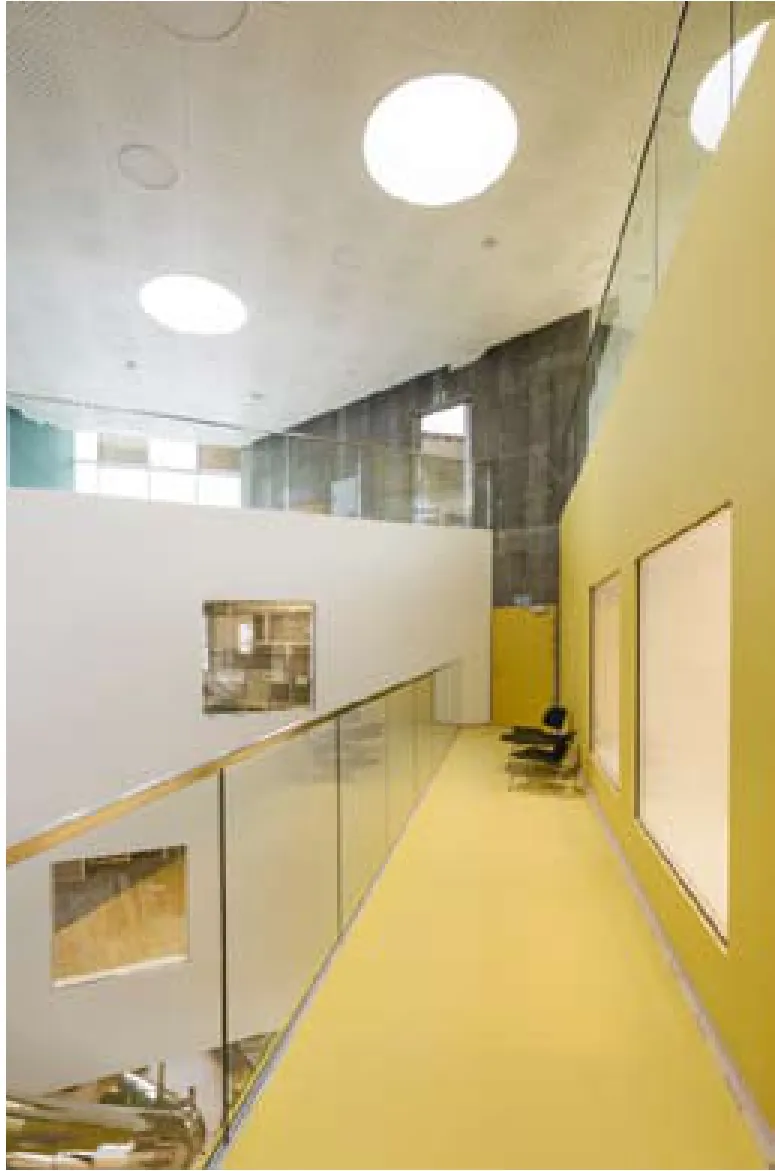

6.7 内景/Interior view
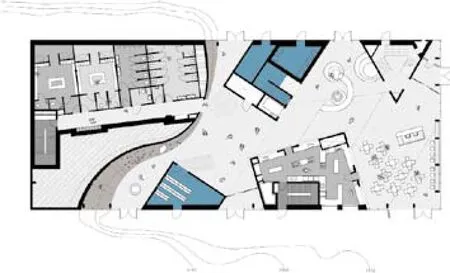
8 首层平面/Floor 0 plan

9 二层平面/Floor 1 plan

10 三层平面/Floor 2 plan

11 四层平面/Floor 3 plan
评论
郭屹民:尽管MVRDV惯用的“剖面表皮”在这里被激进地采用了,但是这座建筑的外观与内部的反差仍然有些令人吃惊。攀爬、跳跃、冲刺的原始动作取代了通常建筑中的行为,伴随着毫无逻辑的体块、材料、色彩和激励的穿插组合,构成了一幕由体量所形成的洞穴或丛林。
Comments
GUO Yimin: Though the means of "section surface skin" oftentimes applied by MVRDV is adopted in an aggressive way, the contrast between the appearance and the interior space of the building is still surprising. The primitive actions like climbing, jumping, and sprinting, replace the usual behaviors in buildings, accompanied by the interweaving of non-logical blocks, materials, colors, and stimulations. As a result, a cave or a jungle composed of different masses is formed.
房木生:据说未来新生代生存的能力之一,是会玩。从这角度来说,“库比文化与运动中心致力于能成为未来社区发展的孵化器”这个愿景是可能实现的。估计从“玩”或者说制造无中生有之矛盾为出发点的设计师不在少数,但最后能否兜得住,搂回到正常的建造中,那应该是很难的吧。MVRDV等建筑师们应该在这个设计之初放任了几种不同形体空间并置,创造出趣味性,同时也制造了矛盾,最后用一种景观化的手法圆了场,就如景观设计师在复杂的地形地貌中找到适合各种人类活动和动植物生长的规律,并留下了自由的空间,表现出了“玩家”建筑师们的高明。会玩,却基于某种理性的大数据,是建筑师的一种境界。
FANG Musheng: One of the abilities required for the new generation to survive in the future is to know how to play well. From this perspective, it is possible to realize the vision of "the Ku.Be House of Culture and Movement to become an incubator for future development within the neighborhood". There are probably many designers who start from the idea of how to play well or how to create something out of nothing. But the difficult point is to achieve this objective and put the fun vision into practice. MVRDV (and ADEPT) architects created a design formed by the spatial juxtaposition of several primary volumes. Variegated and interesting, the architecture becomes a diverse landscape for exploration and discovery of movement. Inspired by landscape design, the complex forms reflect human activities and the growth of plants and animals, showing the brilliant mind of the playful architects. Based on the enough reasonable data, to play well (and to provide the means for doing so) is thus within the realms of architects.
KuBe House of Culture and Movement, Frederiksberg, Denmark, 2016
Architects: MVRDV and ADEPT
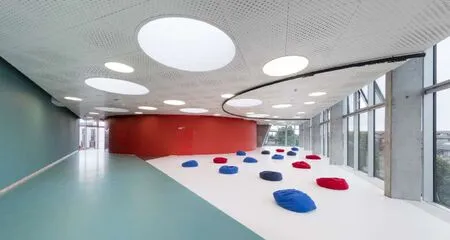
12 内景/Interior view

13 垂直迷宫/The vertical maze

14 绳网/The net

15 剖面/Section
